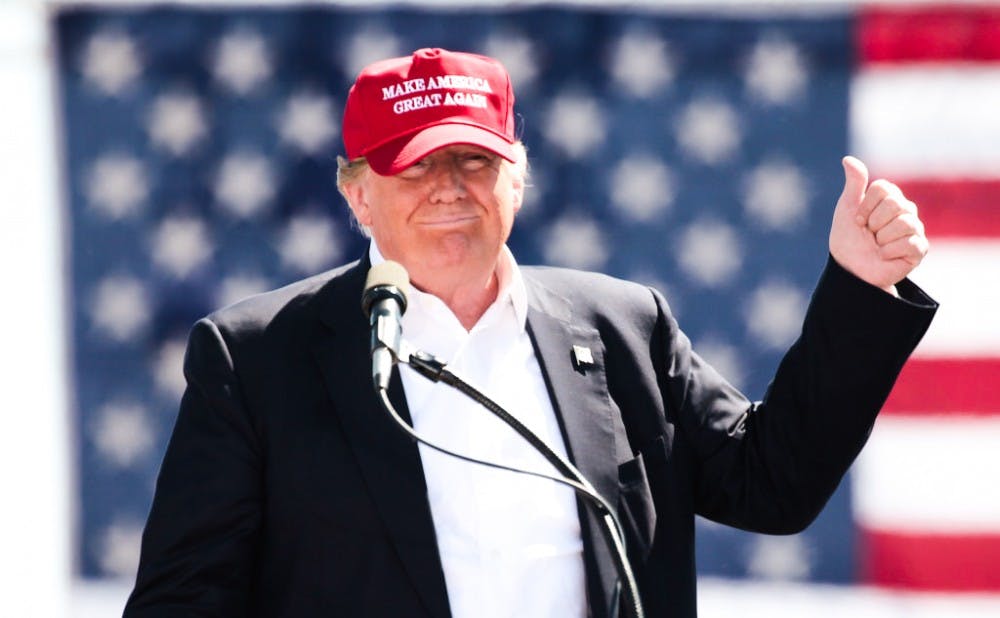Although campaigns ads for Trump have been limited so far in the election, the Clinton campaign has been making heavy use of the airwaves.
Republican nominee Donald Trump's presence has not been widespread, with his first campaign ad beginning its run in August in only four battleground states—Florida, North Carolina, Ohio and Pennsylvania. Politico reported that Hillary Clinton's campaign has spent $126 million on television ads as of mid-September, compared to Trump's $17 million.
North Carolina's status as a swing state has also made it a target for campaign advertising. According to Ad Age article in September, ad spending in North Carolina saw a 166 percent increase between July and August. In addition, the Clinton campaign has spent almost twice as much in North Carolina as it has in Nevada, also a swing state.
"Technology makes it easy to target advertising. It costs very little to make an ad that could potentially resonate with a local population," wrote Ken Rogerson, associate professor of the practice in the Sanford School of Public Policy, in an email. "North Carolina is a battleground state, so it isn’t surprising that the Clinton campaign would take a little extra time to create an NC-specific ad.”
Although Trump campaign ads did not air until August, the Trump campaign is planning to ramp up its ad presence by spending $140 million between now and election day, with $100 million for television ads and the remainder for digital. The campaign’s new ads will air in 13 states, including key battleground states such as North Carolina and new states such as Maine and New Mexico, in which Trump ads have not yet aired during the general election.
"Candidates do talk about what they have done in the past that is positive," Rogerson wrote. "Sometimes they compare themselves to the other candidate and sometimes not. It does seem, however, that the attack ads get the extra publicity of being spread through the internet and social media and, possibly, some coverage in the mainstream media. That doesn’t hurt and doesn’t happen with more positive ads.”
Donald Trump’s recent ad entitled “Movement” flashes through various scenes—Mr. Trump being welcomed with applause at the Republican National Convention, him shaking the hand of a construction worker, a young girl at a lemonade stand and a soldier returning home from war.
The Clinton campaign has resorted to a different strategy—pairing clips of Donald Trump that were previously deemed offensive and then showing how his statements impact a specific group of people. One of the ads sponsored by the Clinton campaign entitled “Role Models” garnered publicity after it showed young children watching Donald Trump mock a reporter and accuse illegal immigrants from Mexico of rape.
“The key is that they strike a responsive chord,” said Bill Adair, Knight professor of the practice of journalism and public policy.
He explained that the phrase "responsive chord" was coined by Tony Shwartz, who created a famous campaign ad for Lyndon Johnson in 1964 called "Daisy Girl." The ad shows a little girl in a meadow counting petals as she plucks petals from a daisy flower. Her voice then evolves into a man’s voice counting down and an atomic blast follows.
Adair noted that Schwartz designed the ad because of the idea that a message is more effective if the voter already has a predisposition to accept the opinion articulated in the it. For instance, if an ad is trying to say that a candidate is reckless and many people already view that candidate as reckless, then the ad will be more effective. Adair added that he does not believe there is any single demographic that is most impacted by campaign ads.
However, presidential campaign advertising often targets specific groups of people by the time in which the advertisement is aired, an element of campaign advertising referred to as "daypart."
Adair also noted that ads featured during specific programs target the demographic groups that watch those programs.
“It is all very strategic," he said. "For each state, they are trying to target a particular segment of the electorate. The ads are often very specifically targeted for a certain demographic slice of the people who vote. For example, in a state like Florida or North Carolina, the campaigns often will air ads that are aimed at women who live in suburban areas because they are a group of voters who often decide later which candidate to vote for.”
Get The Chronicle straight to your inbox
Signup for our weekly newsletter. Cancel at any time.

